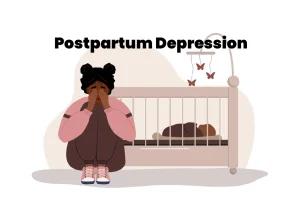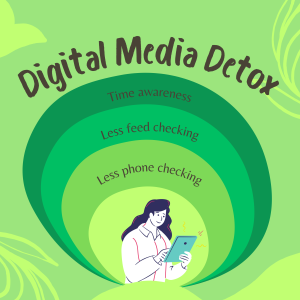Key facts
- One in 160 children has an autism spectrum disorder (ASD)(1).
- ASDs begin in childhood and tend to persist into adolescence and adulthood.
- While some people with ASD can live independently, others have severe disabilities and require life-long care and support.
- Evidence-based psychosocial interventions, such as behavioural treatment and parent skills training programmes, can reduce difficulties in communication and social behaviour, with a positive impact on well-being and quality of life for persons with ASD and their caregivers.
- Interventions for people with ASD need to be accompanied by broader actions for making physical, social and attitudinal environments more accessible, inclusive and supportive.
- Worldwide, people with ASD are often subject to stigma, discrimination and human rights violations. Globally, access to services and support for people with ASD is inadequate.
Introduction
Autism spectrum disorder (ASD) refers to a range of conditions characterised by some degree of impaired social behaviour, communication and language, and a narrow range of interests and activities that are both unique to the individual and carried out repetitively.
ASDs begin in childhood and tend to persist into adolescence and adulthood. In most cases the conditions are apparent during the first 5 years of life.
Individuals with ASD often present other co-occurring conditions, including epilepsy, depression, anxiety and attention deficit hyperactivity disorder (ADHD). The level of intellectual functioning in individuals with ASDs is extremely variable, extending from profound impairment to superior levels.
Epidemiology
It is estimated that worldwide one in 160 children has an ASD. This estimate represents an average figure, and reported prevalence varies substantially across studies. Some well-controlled studies have, however, reported figures that are substantially higher. The prevalence of ASD in many low- and middle-income countries is so far unknown.
Based on epidemiological studies conducted over the past 50 years, the prevalence of ASD appears to be increasing globally. There are many possible explanations for this apparent increase, including improved awareness, expansion of diagnostic criteria, better diagnostic tools and improved reporting.
Causes
Available scientific evidence suggests that there are probably many factors that make a child more likely to have an ASD, including environmental and genetic factors.
Available epidemiological data are conclusive that there is no evidence of a causal association between measles, mumps and rubella vaccine, and ASD. Previous studies suggesting a causal link were found to be filled with methodological flaws. (2)(3)
There is also no evidence to suggest that any other childhood vaccine may increase the risk of ASD. Evidence reviews of the potential association between the preservative thiomersal and aluminium adjuvants contained in inactivated vaccines and the risk of ASD strongly concluded that vaccines do not increase the risk of ASDs.
Assessment and management
Intervention during early childhood is important to promote the optimal development and well-being of people with an ASD. Monitoring of child development as part of routine maternal and child health care is recommended.
It is important that, once identified, children with an ASD and their families are offered relevant information, services, referrals, and practical support according to their individual needs. There is no known cure for ASD. Evidence-based psychosocial interventions, however, such as behavioural treatment and skills training programmes for parents and other caregivers, can reduce difficulties in communication and social behaviour, with a positive impact on the person’s well-being and quality of life.
The health-care needs of people with ASD are complex and require a range of integrated services, including health promotion, care, rehabilitation services, and collaboration with other sectors such as education, employment and social care.
Interventions for people with ASD and other developmental disorders need to be accompanied by broader actions for making their physical, social, and attitudinal environments more accessible, inclusive and supportive.
Social and economic impacts
ASDs may significantly limit the capacity of an individual to conduct daily activities and participate in society. ASDs often negatively influence the person’s educational and social attainments as well as employment opportunities.
While some individuals with ASD are able to live independently, others have severe disabilities and require life-long care and support.
ASDs often impose significant emotional and economic burden on people with these disorders and their families. Caring for children with a severe form of the condition may be demanding, especially where access to services and support are inadequate. Therefore the empowerment of caregivers is increasingly being recognized as a critical component of care for children with ASD.
Human rights
People with ASD are often subject to stigma and discrimination, including unjust deprivation of health care, education and opportunities to engage and participate in their communities.
People with ASD have the same health problems that affect the general population. Furthermore, they may have specific health-care needs related to ASD or other co-occurring conditions. They may be more vulnerable to developing chronic noncommunicable conditions because of behavioural risk factors such as physical inactivity and poor dietary preferences, and are at greater risk of violence, injury and abuse.
People with ASD require accessible health services for general health-care needs like the rest of the population, including promotive and preventive services and treatment of acute and chronic illness. Nevertheless, people with ASD have higher rates of unmet health-care needs compared with the general population. They are also more vulnerable during humanitarian emergencies. A common barrier is created by health-care providers’ inadequate knowledge of ASD and misconceptions.
WHO Resolution on autism spectrum disorders (WHA67.8)
In May 2014, the Sixty-seventh World Health Assembly adopted a resolution entitled “Comprehensive and coordinated efforts for the management of autism spectrum disorders (ASD),” which was supported by more than 60 countries.
The resolution urges WHO to collaborate with Member States and partner agencies to strengthen national capacities to address ASD and other developmental disorders.
WHO response
WHO and partners recognize the need to strengthen countries’ abilities to promote the optimal health and well-being of all persons with ASD.
Efforts are focusing on:
- contributing to enhancing the commitment of governments and international advocacy on autism;
- providing guidance on creating policies and action plans that address ASD within the broader framework of mental health and disabilities;
- contributing to the development of evidence on effective and scalable strategies for the assessment and treatment of ASD and other developmental disorders.
WHO, in consultation with experts, parents’ association and civil society organizations, has developed a parent skills training programme which is currently undergoing field-testing.
References
(1) Mayada et al. Global prevalence of autism and other pervasive developmental disorders. Autism Res. 2012 Jun; 5(3): 160–179.
(2) Wakefield’s affair: 12 years of uncertainty whereas no link between autism and MMR vaccine has been proved. Maisonneuve H, Floret D. Presse Med. 2012 Sep; French (https://www.ncbi.nlm.nih.gov/pubmed/22748860).
(3) Lancet retracts Wakefield’s MMR paper. Dyer C. BMJ 2010;340:c696. 2 February 2010 (https://www.bmj.com/content/340/bmj.c696.long).
POST SOURCE: https://www.who.int/en/news-room/fact-sheets/detail/autism-spectrum-disorders






